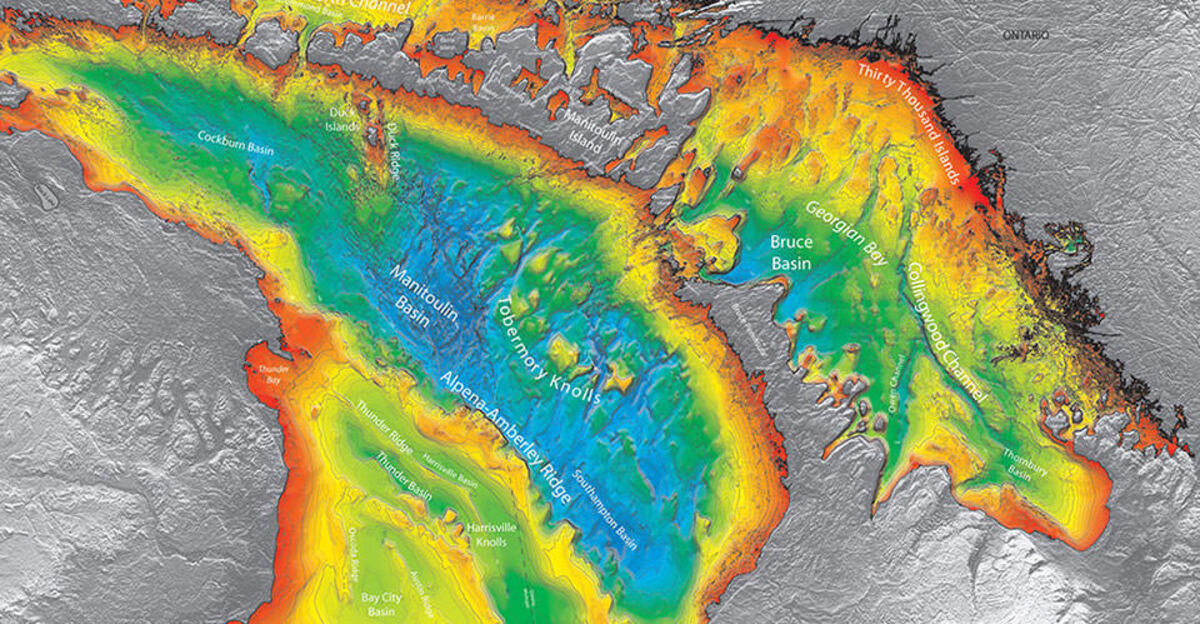
Are you ready to dive deep into the fascinating world of bathymetry? If you’re unfamiliar with the term, bathymetry is the study and mapping of the depths and contours of the ocean floor. It is a vital field of study that helps us understand the complex topography and features hidden beneath the sea surface.
In this article, we will explore 10 mind-blowing facts about bathymetry that will leave you amazed and eager to learn more. From the sheer size of the oceans to the incredible discoveries made through advanced mapping technologies, prepare to be astounded by the wonders that lie beneath the waves.
So, grab your scuba gear and let’s embark on a journey to discover the hidden mysteries of the ocean floor with these 10 intriguing bathymetry facts!
Key Takeaways:
- Bathymetry helps scientists map the ocean floor, revealing hidden features like underwater volcanoes and sunken shipwrecks. It’s like creating a giant treasure map for the sea!
- By studying bathymetric data, scientists can understand ocean currents, tsunami hazards, and even explore the Great Barrier Reef. It’s like solving a giant puzzle to uncover the secrets of the deep blue sea!
The Deepest Point in the Ocean
Bathymetry, the measurement of ocean depths and the topography of the ocean floor, has revealed that the Mariana Trench holds the title for the deepest point in the world’s oceans. Located in the western Pacific Ocean, the trench reaches a staggering depth of around 36,070 feet (10,994 meters) below sea level.
Mapping the Seafloor
Bathymetry plays a crucial role in mapping the seafloor, allowing scientists to understand the intricate features and formations beneath the ocean’s surface. By using specialized sonar systems and satellite technology, bathymetric data is gathered to create accurate maps of the ocean floor.
Revealing Submerged Mountain Ranges
Bathymetry has uncovered the presence of massive submerged mountain ranges known as mid-ocean ridges. These underwater mountain chains span thousands of kilometers, and their discovery has provided valuable insights into plate tectonics and the formation of new oceanic crust.
Unveiling Underwater Volcanoes
Bathymetric surveys have unveiled numerous underwater volcanoes, also known as seamounts, lurking beneath the ocean surface. These volcanic structures play a crucial role in supporting unique ecosystems and can even influence ocean currents and water chemistry.
Mapping Oceanic Trenches
Bathymetry has allowed scientists to accurately map the intricate details of oceanic trenches. These vast depressions in the seafloor are formed by the collision of tectonic plates and are home to diverse marine life, including unique species adapted to extreme conditions.
Understanding Ocean Circulation
By studying bathymetric data, scientists have gained a better understanding of how ocean currents circulate around the globe. The shape and depth of the seafloor influence the flow of water, affecting climate patterns and the distribution of heat and nutrients in the ocean.
Uncovering Underwater Canyons
Bathymetry has revealed the existence of underwater canyons that rival their terrestrial counterparts in both size and complexity. Submarine canyons, such as the Monterey Canyon off the coast of California, provide important habitats for marine life and serve as pathways for sediment transport.
Exploring the Great Barrier Reef
Bathymetry has played a crucial role in exploring and mapping the Great Barrier Reef, the world’s largest coral reef system. By utilizing bathymetric data, scientists can identify shallow areas, coral formations, and intricate reef structures, aiding in conservation efforts and understanding the reef’s ecological significance.
Unearthing Sunken Shipwrecks
Bathymetry has been instrumental in locating and studying sunken shipwrecks. By using sonar technology and detailed bathymetric maps, researchers can pinpoint the precise location of these maritime relics, shedding light on historical events and providing insights into marine archaeology.
Understanding Tsunami Hazards
Bathymetric data is crucial for understanding the potential impacts of tsunamis. By analyzing the shape and features of the seafloor, scientists can accurately model the propagation and potential areas of tsunami inundation, helping to mitigate the risks posed by these devastating natural disasters.
With these mind-blowing facts about bathymetry, it is evident that this discipline plays a vital role in unraveling the mysteries of the ocean. From mapping underwater mountain ranges to locating sunken shipwrecks, bathymetry continues to provide valuable insights into the dynamic world beneath the waves.
Conclusion
In conclusion, bathymetry is a fascinating and essential field of study that has greatly contributed to our understanding of the world’s oceans and their hidden depths. From revealing intricate seafloor landscapes to mapping out underwater volcanoes and trenches, bathymetry plays a crucial role in various scientific and practical applications. By utilizing advanced technologies and methodologies, scientists continue to push the boundaries of our knowledge about the underwater world.
By exploring the mysteries of bathymetry, we can unlock valuable insights into the Earth’s geological history, monitor changes in ocean currents and climates, facilitate safe navigation for marine vessels, and even uncover untapped resources beneath the ocean floor. The ever-evolving field of bathymetry promises to bring new discoveries, which will undoubtedly amaze and astound us in the future.
FAQs
1. What is bathymetry?
Bathymetry is the scientific study of the depth, topography, and features of the ocean floor. It involves the measurement and mapping of underwater landscapes using various techniques and instruments.
2. How is bathymetry data collected?
Bathymetry data can be collected using methods such as sonar, multibeam echo sounders, satellite altimetry, and remote sensing. These methods utilize sound waves, satellite technology, and specialized instruments to measure the depth and shape of the seafloor.
3. What are the practical applications of bathymetry?
Bathymetry has numerous practical applications, including safe navigation for ships, offshore construction and infrastructure development, marine resource exploration, geological and oceanographic research, and environmental management.
4. Why is bathymetry important?
Understanding the bathymetry of the ocean is crucial for a range of reasons. It helps us to identify potential hazards such as submerged reefs or volcanic activity, study the movement of ocean currents and tides, and discover hidden ecosystems and marine biodiversity.
5. How does bathymetry contribute to our understanding of the Earth’s history?
By studying bathymetry, scientists can uncover evidence of past geological events such as plate tectonics, volcanic activity, and underwater landslides. This contributes to our understanding of Earth’s history and helps us predict future geological processes.
Was this page helpful?
Our commitment to delivering trustworthy and engaging content is at the heart of what we do. Each fact on our site is contributed by real users like you, bringing a wealth of diverse insights and information. To ensure the highest standards of accuracy and reliability, our dedicated editors meticulously review each submission. This process guarantees that the facts we share are not only fascinating but also credible. Trust in our commitment to quality and authenticity as you explore and learn with us.


